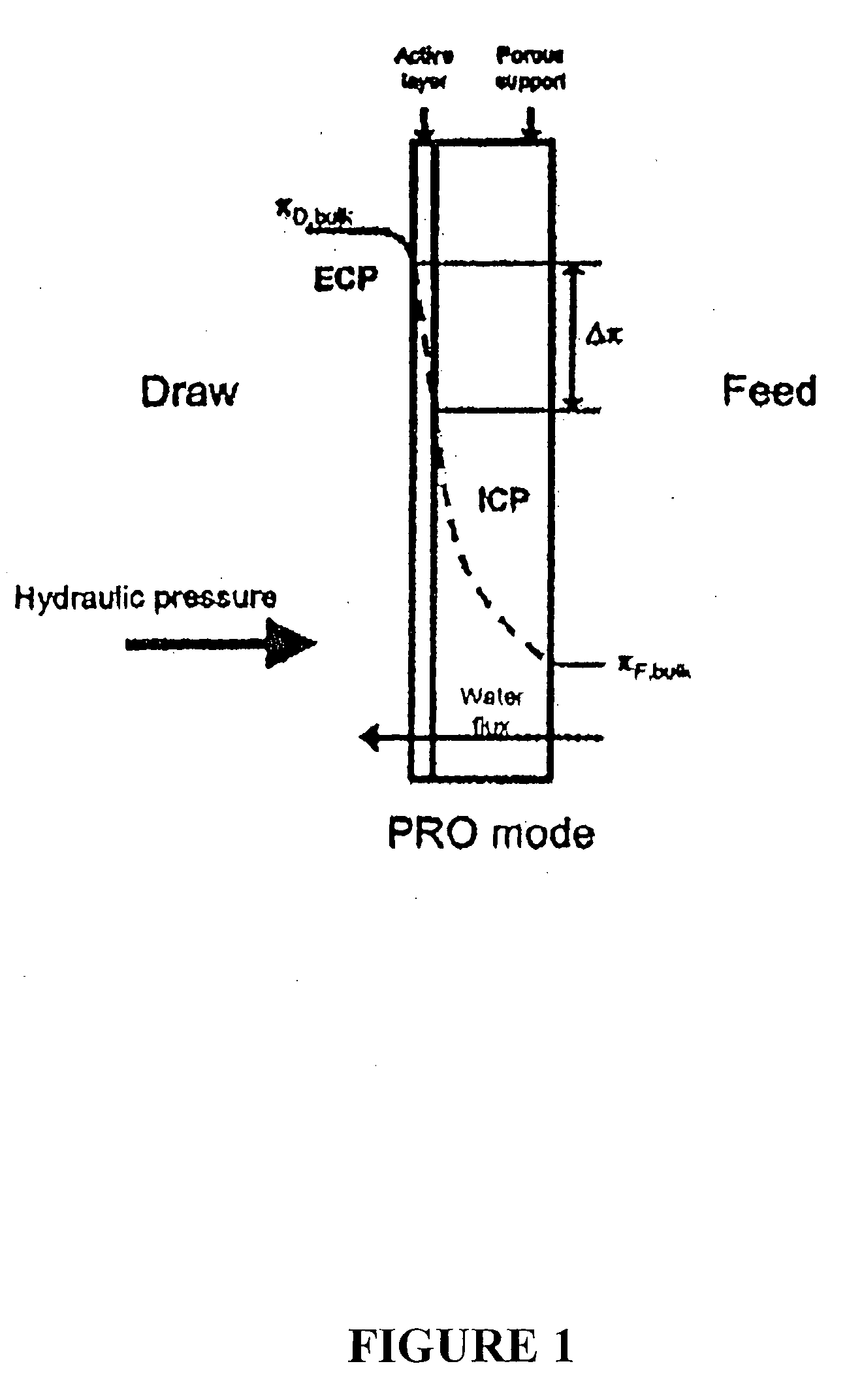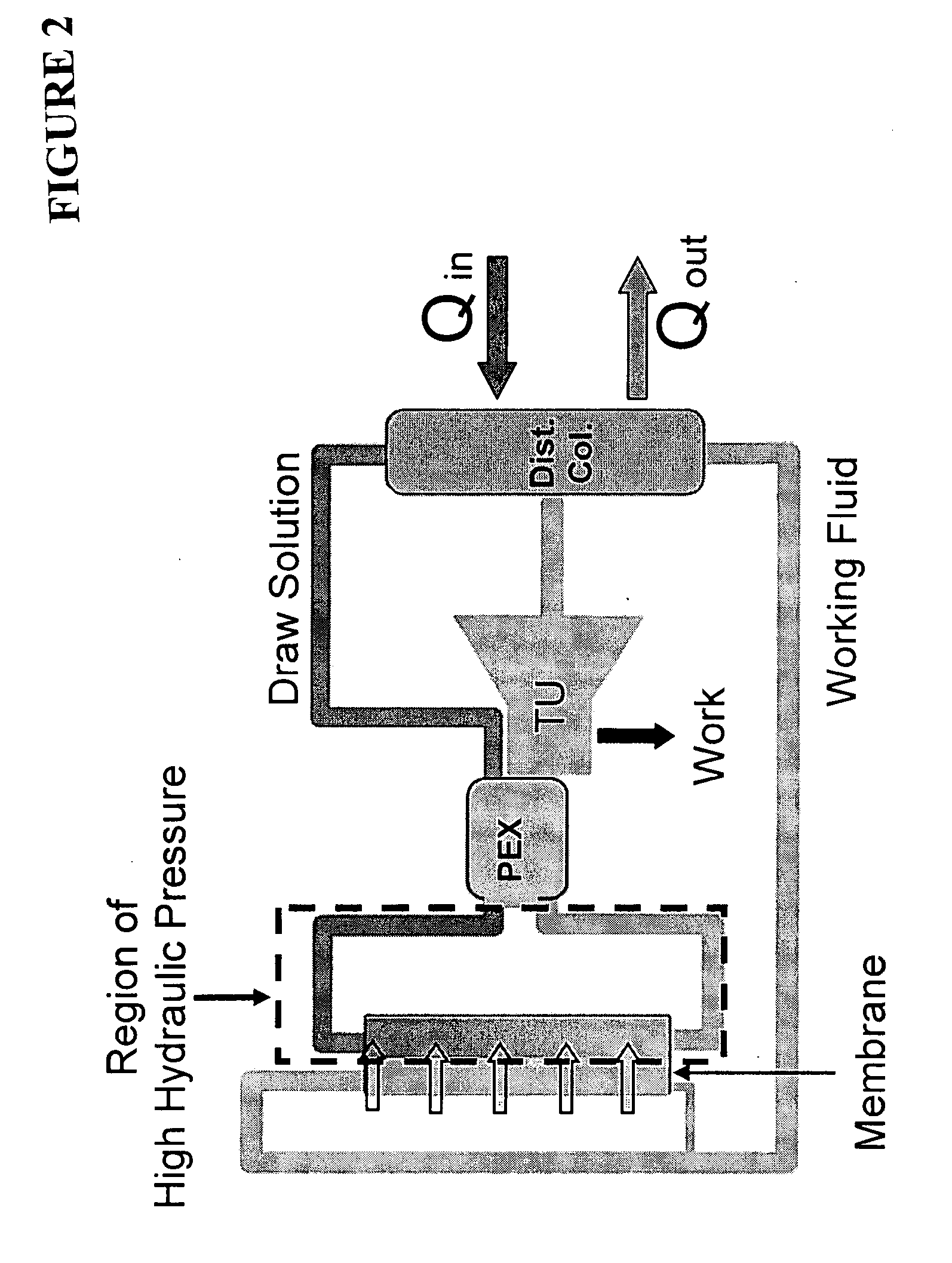Osmotic Heat Engine
a heat engine and osmotic technology, applied in the direction of machines/engines, reverse osmosis, mechanical equipment, etc., can solve the problems of deltas, also known as “open loop” pro, and many operational and design limitations, so as to hinder the osmotic flow
- Summary
- Abstract
- Description
- Claims
- Application Information
AI Technical Summary
Benefits of technology
Problems solved by technology
Method used
Image
Examples
example
[0054]Flux experiments were conducted in the laboratory to determine the viability of the osmotic heat engine process of the invention. Water flux must be high if the generation of power is to be efficient. Previous tests on flux using reverse osmosis membranes showed that the flux rarely exceeded minimum values (no more than 2-3 gallons per foot squared membrane area per day (gfd) and often much less than 1 gfd).
[0055]The inventors investigated a commercially available membrane which is tailored for osmotic processes and found flux to be much better. The data was taken with the NH3—CO2 draw solution on the active layer of the membrane. A deionized water feed was used to simulate osmotic heat engine conditions. Two temperatures were evaluated: 20° C. and 40° C., and the feed and draw solutions were maintained at identical temperatures for both series of tests. The results are shown in FIG. 3.
[0056]Two temperatures were tested over a range of osmotic pressures. Fluxes over 50 gfd wer...
PUM
 Login to View More
Login to View More Abstract
Description
Claims
Application Information
 Login to View More
Login to View More - R&D
- Intellectual Property
- Life Sciences
- Materials
- Tech Scout
- Unparalleled Data Quality
- Higher Quality Content
- 60% Fewer Hallucinations
Browse by: Latest US Patents, China's latest patents, Technical Efficacy Thesaurus, Application Domain, Technology Topic, Popular Technical Reports.
© 2025 PatSnap. All rights reserved.Legal|Privacy policy|Modern Slavery Act Transparency Statement|Sitemap|About US| Contact US: help@patsnap.com



